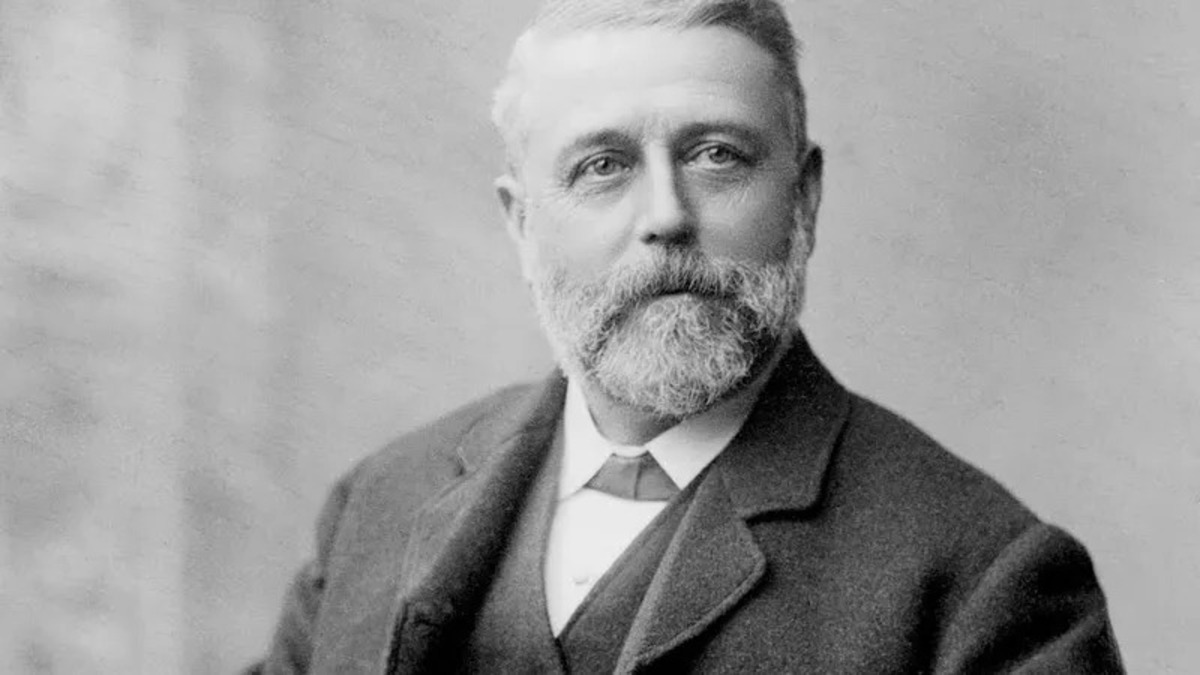
Did Thomas Crapper invent the toilet? No, he did not. However, Thomas Crapper played a significant role in popularizing and improving the modern flush toilet. Born in 1836, Crapper was a British plumber and businessman who held several patents related to plumbing innovations. His name became synonymous with toilets due to his successful marketing and branding efforts. Despite common myths, the flush toilet's invention predates Crapper by centuries, with early versions appearing in ancient civilizations. Crapper's contributions, though, were pivotal in making indoor plumbing more accessible and efficient. Ready to dive into more intriguing facts about this plumbing pioneer? Let's get started!
Key Takeaways:
- Thomas Crapper, a plumber from England, didn't invent the toilet, but his innovations and marketing made toilets more accessible and improved public health through better sanitation practices.
- Despite myths and misconceptions, Thomas Crapper's legacy lives on through his practical inventions, commitment to quality, and impact on modern plumbing systems worldwide.
Who Was Thomas Crapper?
Thomas Crapper is often associated with the invention of the modern toilet. However, his life and contributions extend beyond this common belief. Here are some intriguing facts about this historical figure.
-
Thomas Crapper was born in 1836 in Thorne, Yorkshire, England. His exact birth date remains unknown.
-
He was apprenticed to a master plumber at the age of 14. This early start laid the foundation for his future success in the plumbing industry.
-
Crapper did not invent the flush toilet. That credit goes to Sir John Harington, who invented a precursor in 1596, and Alexander Cummings, who patented the S-trap in 1775.
-
He did, however, popularize the toilet. Crapper's company manufactured and promoted sanitary plumbing fixtures, making them more accessible to the public.
-
Crapper held nine patents. These included improvements to the flushing mechanism and other plumbing innovations.
-
He opened his own plumbing business in 1861. The company, Thomas Crapper & Co., became well-known for high-quality sanitary ware.
Innovations and Contributions
Thomas Crapper's contributions to plumbing technology were significant. His innovations helped shape modern sanitation systems.
-
He invented the ballcock. This device controls water flow in a toilet tank, preventing overflow.
-
Crapper's company installed plumbing in royal palaces. His work for the British monarchy boosted his reputation.
-
He promoted the use of bathroom showrooms. This marketing strategy allowed customers to see and choose fixtures before purchase.
-
Crapper's name became synonymous with toilets. The term "crapper" is believed to have originated from American soldiers during World War I who saw his company's name on toilets.
-
He was a strong advocate for sanitary plumbing. Crapper's efforts helped improve public health by promoting better hygiene practices.
-
His company was granted several royal warrants. These endorsements from the British royal family further solidified his reputation.
Myths and Misconceptions
Despite his contributions, many myths surround Thomas Crapper. Let's clear up some common misconceptions.
-
Crapper did not invent the toilet. This is a widespread myth, but his role was more about innovation and promotion.
-
The word "crap" predates Thomas Crapper. The term has origins in Middle English, long before Crapper's time.
-
He was not knighted. Although he worked for royalty, he never received a knighthood.
-
Crapper's company still exists. Thomas Crapper & Co. continues to operate, maintaining his legacy in the plumbing industry.
-
He was not the first to use porcelain for toilets. Porcelain had been used in sanitary ware before Crapper's time.
-
Crapper's contributions were more about quality and accessibility. He made sanitary fixtures more reliable and available to the general public.
Legacy and Impact
Thomas Crapper's legacy extends beyond his lifetime. His impact on plumbing and sanitation continues to be felt today.
-
Crapper retired in 1904. He left his company in the hands of his nephew, George.
-
He passed away in 1910. Crapper died at the age of 73 in Anerley, South London.
-
His grave is in Elmers End Cemetery. A simple headstone marks his final resting place.
-
Crapper's company was revived in the 1960s. It was purchased by Simon Kirby, who restored its reputation for quality.
-
He is remembered in popular culture. Crapper has been referenced in books, movies, and television shows.
-
His name is often used humorously. The association with toilets has made his name a source of amusement.
-
Crapper's innovations are still in use. Many of his plumbing improvements remain standard in modern toilets.
Interesting Tidbits
Here are some lesser-known facts about Thomas Crapper that add to his fascinating story.
-
He was a Freemason. Crapper was a member of the United Grand Lodge of England.
-
Crapper's company had a showroom on King's Road in London. This location became famous for its high-quality fixtures.
-
He was a philanthropist. Crapper supported various charitable causes throughout his life.
-
Crapper's name appears in dictionaries. The Oxford English Dictionary includes "crapper" as slang for toilet.
-
He was known for his attention to detail. Crapper's commitment to quality set his products apart from competitors.
-
Crapper's company produced a catalog. This publication showcased their range of sanitary ware and plumbing fixtures.
-
He was a pioneer in public health. Crapper's work helped reduce the spread of disease through improved sanitation.
-
Crapper's company employed skilled craftsmen. This ensured that their products were of the highest quality.
-
He was a family man. Crapper married Maria Green in 1860, and they had several children.
-
Crapper's inventions were practical. His designs focused on functionality and ease of use.
-
He was a self-made man. Crapper's success came from hard work and dedication to his craft.
-
Crapper's influence extended internationally. His products were exported to various countries, spreading his innovations worldwide.
-
Crapper's story is one of perseverance. Despite myths and misconceptions, his contributions to plumbing and sanitation remain significant.
The Legacy of Thomas Crapper
Thomas Crapper's contributions to modern plumbing can't be overstated. Though he didn't invent the flush toilet, his improvements and marketing efforts made it a household staple. His name, often humorously linked to the word "crap," has become synonymous with toilets, but his real legacy lies in his innovations and business acumen.
Crapper's advancements in plumbing technology, like the ballcock, revolutionized sanitation. His company's high standards and quality products set the bar for the industry. While myths about him persist, the truth is he played a crucial role in making indoor plumbing more efficient and accessible.
Understanding Crapper's impact helps appreciate the conveniences we often take for granted. Next time you use a modern bathroom, remember the man who helped make it possible. His legacy lives on in every flush.
Frequently Asked Questions
Was this page helpful?
Our commitment to delivering trustworthy and engaging content is at the heart of what we do. Each fact on our site is contributed by real users like you, bringing a wealth of diverse insights and information. To ensure the highest standards of accuracy and reliability, our dedicated editors meticulously review each submission. This process guarantees that the facts we share are not only fascinating but also credible. Trust in our commitment to quality and authenticity as you explore and learn with us.


